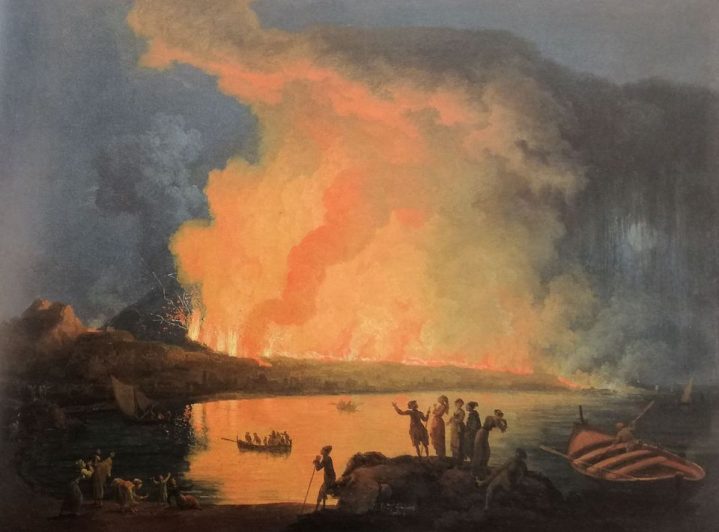Volcanoes Visual History
Iconografia vulcanologica tra XVII e XIX secolo

The objective of the project is to explore from a historical-scientific and historical-artistic point of view the spectacular volcanological iconography created between the 17th and early 19th centuries, analyzing its genesis and clarifying its descriptive and theoretical meaning within the historical period in which it was produced. Some of these images, dating back to an era in which modern geology was slowly being born, have been used by contemporary volcanologists as technical data to reconstruct the history of volcanoes. Others have been studied by art historians for their aesthetic value. An interdisciplinary approach between the history of science and the history of art is missing. This database aims to fill this gap. The usual chronological categorization (years of the eruptions) is therefore integrated by a thematic categorization (theories, orographic changes, etc.) and by authors (scientists, artists, publishers) and by a series of aids aimed at reconstructing the historical-scientific meaning of these visual documents. Focused, in this first edition, above all on the iconography of Vesuvius, the site also contains articles on Etna, Santorini and a few other locations, but in perspective it aims to include images of the most varied volcanic sites relevant from a historical point of view. scientific and historical-artistic.
L’obiettivo del progetto è quello di esplorare da un punto di vista storico-scientifico e storico-artistico la spettacolare iconografia vulcanologica realizzata tra XVII e inizio XIX secolo, analizzandone la genesi e chiarendone il significato descrittivo e teorico nell’ambito del periodo storico in cui fu prodotta. Alcune di queste immagini, risalenti ad un’epoca in cui, lentamente, nasceva la moderna geologia, sono state utilizzate dai vulcanologi contemporanei come dati tecnici per ricostruire la storia dei vulcani. Altre sono state studiate dagli storici dell’arte per la loro valenza estetica. Manca un approccio interdisciplinare tra storia della scienza e storia dell’arte. Questo database intende colmare questa lacuna. La consueta categorizzazione cronologica (anni delle eruzioni) viene quindi integrata da una categorizzazione tematica (teorie, mutamenti orografici, etc.) e per autori (scienziati, artisti, editori) e da una serie di sussidi volti a ricostruire il significato storico-scientifico di questi documenti visivi. Incentrato, in questa sua prima edizione, soprattutto sull’iconografia del Vesuvio, il sito contiene anche articoli sull’Etna, Santorini e poche altre località, ma in prospettiva mira ad includere immagini dei più vari siti vulcanici rilevanti da un punto di vista storico-scientifico e storico-artistico.
Team VVH
Domenico Laurenza (Università degli Studi di Cagliari), Antonio Clericuzio (Università degli Studi Roma Tre), Marco Guarracino (Università degli Studi Roma Tre).
Links and references
Link identifier #identifier__80499-1https://vvh.uniroma3.it/

